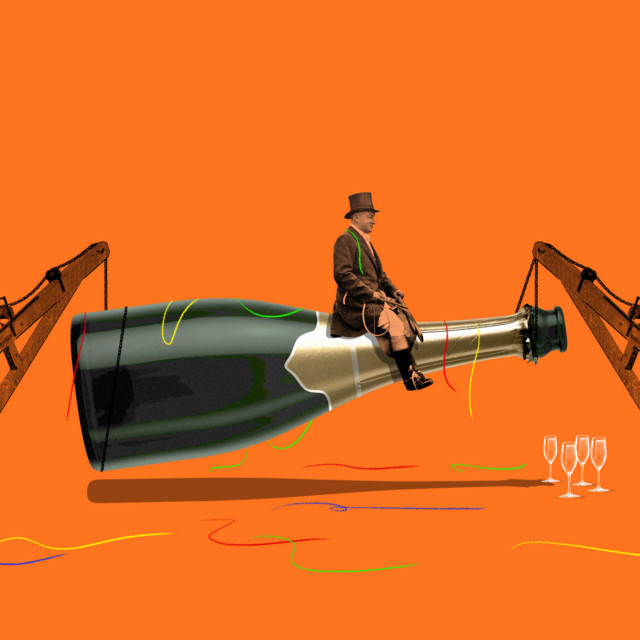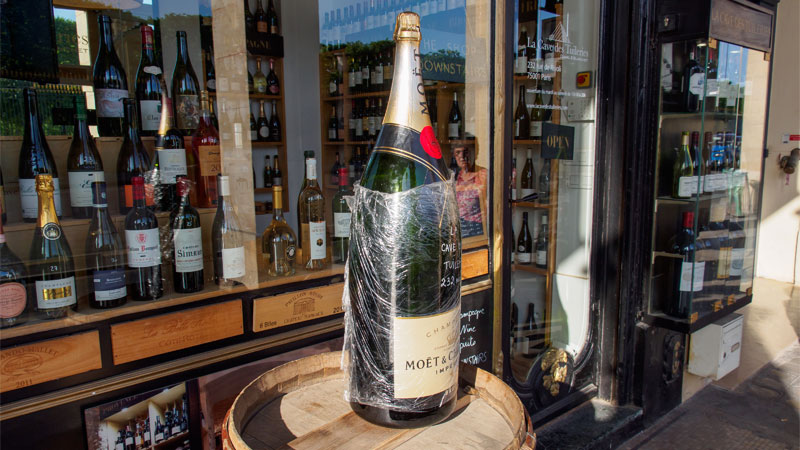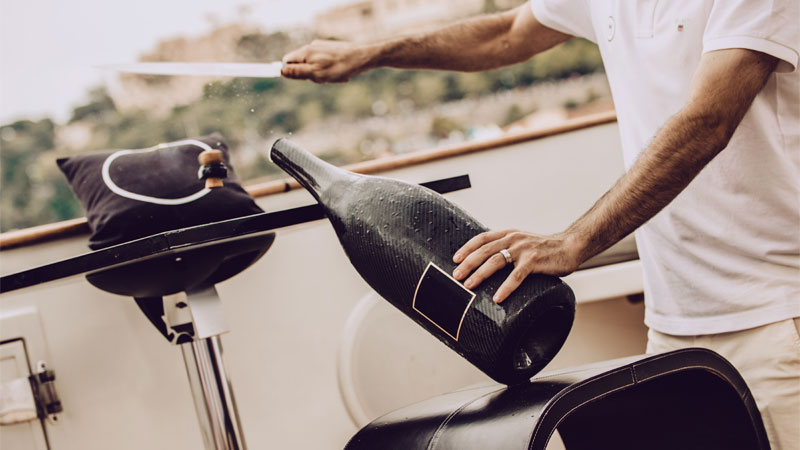For producers of Champagne and sophisticated collectors of the world’s most famous bubbly, what everyone else considers to be the standard bottle of wine — the 750-milliliter bottle that fits snuggly into wine racks or and can be chilled upright in the fridge — doesn’t quite measure up.
Benoit Gouez, cellar master for Moët & Chandon, has a wry personality even when talking about his own sparkling wines. At a small trade tasting at Lacroix in Philadelphia, Gouez poured non-vintage Moët from standard 750-milliliter bottles. But when he was ready to taste vintages, magnums appeared at the table.
Gouez smiled. “Now, we are finished with the half-bottles, those half-magnums,” he announced as he opened a large 1.5-liter bottle. For Gouez and other cellar masters from the Marne Valley, a magnum is their “standard” bottle.
Why is that? And how are these big bottles stored and served? Can a sommelier, who normally pours bubbly with one hand, their thumb stuck into the punt or indentation at the bottom of the bottle, do that thumb trick with a heavy, bulky magnum?
“The advantage of magnums is that the oxidation process is slower than in standard bottles,” says Mathieu Roland-Billecart, the seventh generation to head the family-owned Billecart-Salmon Champagne house. “Hence, you can age your magnums longer, as they maintain freshness for longer than [750-milliliter] bottles.” He adds, “They are also, of course, very handy for big parties.”
Some Champagne wineries use magnums in their cellars for another reason. Since almost all non-vintage Champagne is blended, producers store large portions of base wine from each vintage in their cellars for years to combine later with other vintages. As author Richard Juhlin explains in his book “A Scent of Champagne,” Bollinger, one of the most respected producers, does not store its reserves in large barrels or tanks. “The reserve wines are stored under slight pressure in magnum bottles,” Juhlin says, until they are ready to decant and blend.
Producer Bruno Paillard releases its 750-milliliter bottles for sale first, as they “are ready to drink before the magnums,” says Alice Paillard, daughter of the brand’s founder. “Additionally, almost all wines we choose for our library collection are in the magnum format.”
Collectors with large wine cellars often buy magnums and even larger bottles — not only for Champagne, but also for still wines. They look impressive in the cellar, of course, but the main reason is that magnums will age for decades. Acker auction house recently offered a large Champagne collection of several hundred bottles dating back to 1917. Nearly half were magnums.
But those wanting to collect magnums may have a storage problem, as those bottles “will not fit in the more conventional, cubbyhole type racks,” says Don Cochran, owner of Cellarium, a wine cellar design company. “So for that racking, we have to talk with [the collector] ahead of time so we can widen or open up the centerlines for the larger bottles.”
While Champagne producers and affluent collectors have more practical reasons for thinking of magnums as standard bottles — aging potential and resale value — partygoers and those planning large celebrations love big bottles of bubbly just for the fun of it. “Magnums of Champagne individually are showstoppers for guests,” says sommelier Winn Robertson, who enjoys serving magnums of sparkling wines at Bourbon Steak restaurant in Washington, D.C.
Still, Robertson admits that serving magnums presents challenges for waiters and sommeliers — one being that, even though it’s a bigger bottle, a magnum cork is the same size as a standard cork. “It simply requires more hand and arm strength to open it, and a very sure hand and wrist as your pour to control volume in the glass,” says Master Sommelier Evan Goldstein, president and CEO of Full Circle Wine Solutions.
Magnums also must be stored at colder temperatures than standard bottles to retard the volatility of all those extra bubbles, says Robertson. Otherwise, opening them “can be explosive.” Because handling large bottles among delicate glasses is awkward in tight quarters, he prefers pouring at a side table, then serving from a tray. “I’ll pretty much always use two hands for the first half-ish of the bottle — no sense in possibly dropping a bottle,” Robertson says. “One memorable night of service involved lots of magnums around the restaurant, resulting in very sore shoulders and upper back.”
And sometimes, there can be disasters. Kansas City-based Master Sommelier Doug Frost experienced one such incident when trying to open a magnum on a crowded dance floor as the clock was counting down on New Year’s Eve. “I twisted the cork on the bottle, and it didn’t budge,” he says. “I was still out there a minute or two after the cheers and singing, still trying to yank that f*cking cork out of it. I eventually had to use a wrench. Of course, the cork on the second bottle flew out the moment I touched it.”
“Then, there was the time I sabered a magnum,” Frost recalls, describing the fanciful sommelier practice of opening a Champagne bottle by striking its neck with a small sword. It did not go well. “That certainly was dumb,” he says.
But for all the hassles of serving, most sommeliers agree with the Champagne cellar masters that magnums are their favorite size of Champagne bottles. “The wine ages and develops so much slower and more gracefully,” Goldstein says. Plus, say somms, guests who order magnums are usually partying and in a great mood to celebrate (and tip generously).


